In thinking about “everyone” beginning to grow some small amount of produce in the Destructive Distance post, I have to turn inward to make sure I do what I can to promote this discussion and prove it worth experimentation on an individual level.
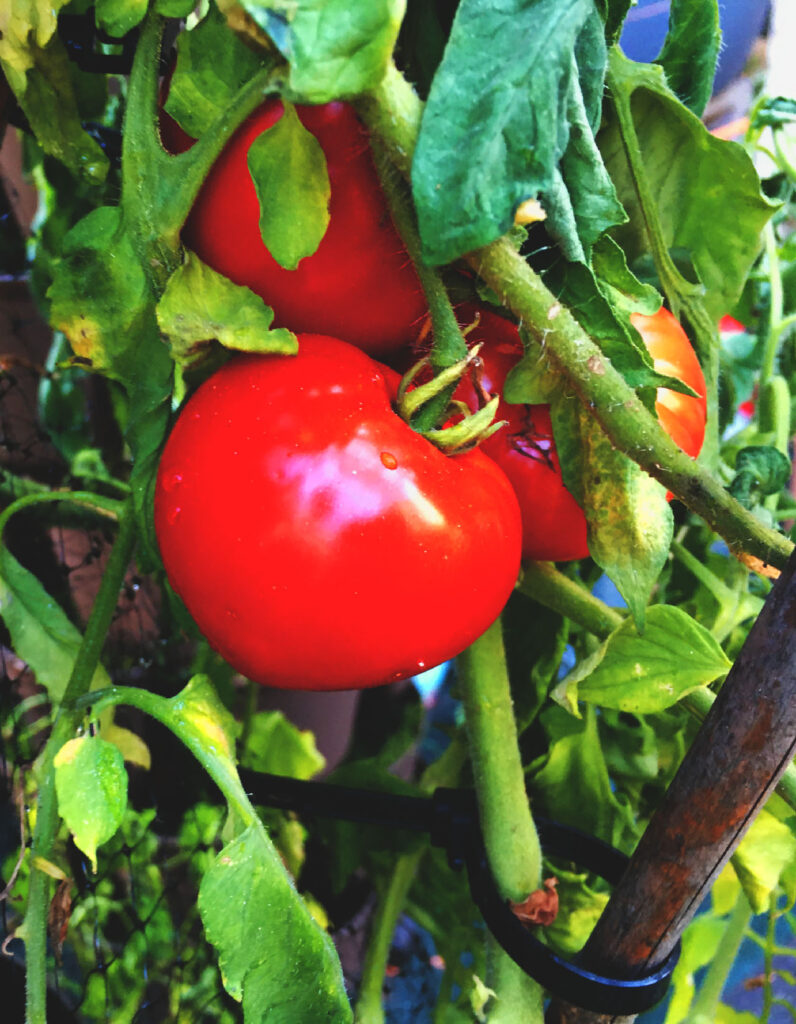
I didn’t order these. This is a mystery tomato. 
Gorgeous red dahlia coming in…there’s more than one per plant. Needs more sun but it’s working with what its got. 
One of the coneflower varieties. I think we ended up with five varieties this year. They will be better established next year, so I’m looking forward to that. 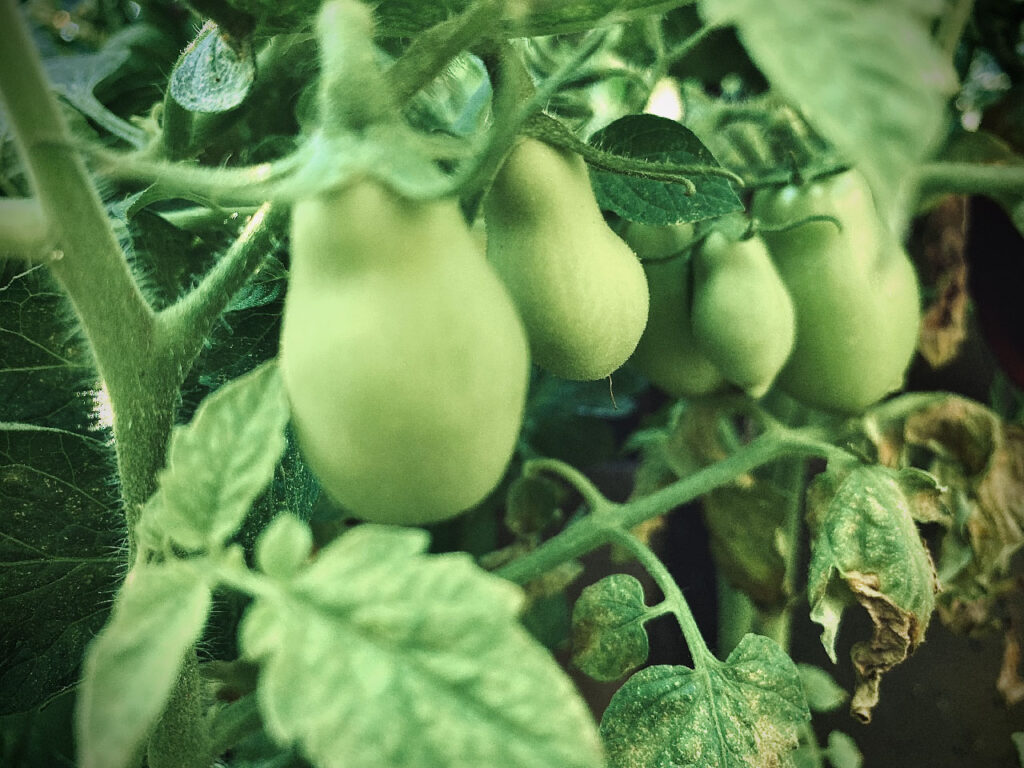
Romas. They are abundant in the vertical growing tower. Grateful for that. 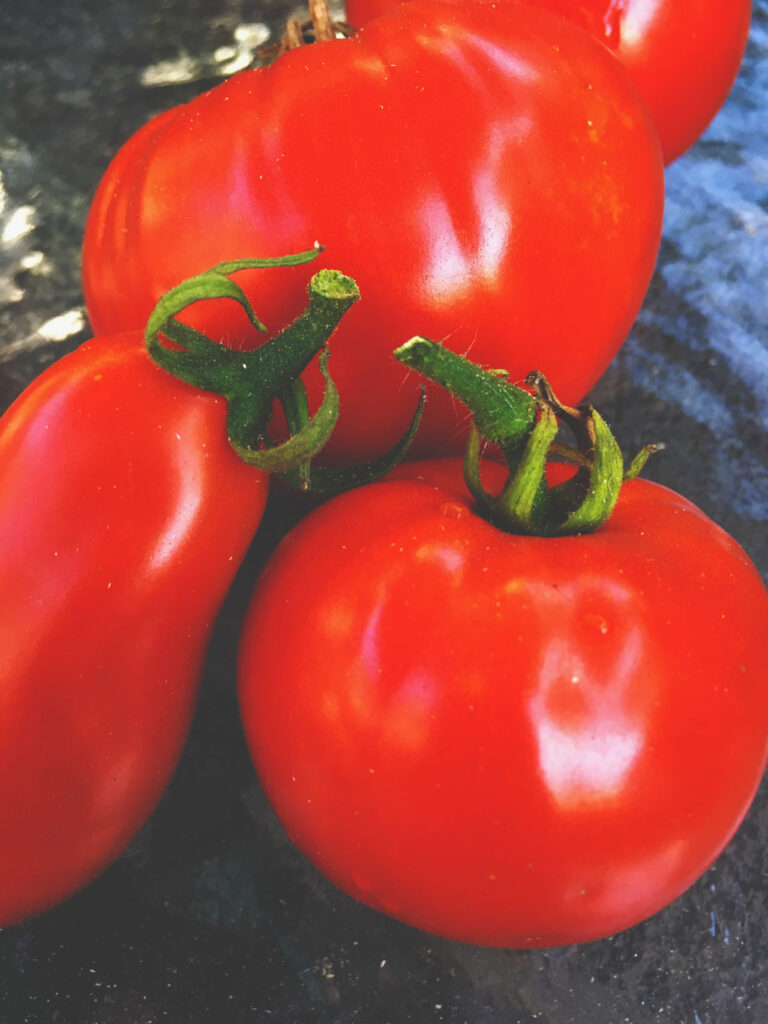
Only one of the tomatoes in this image was an expected arrival. 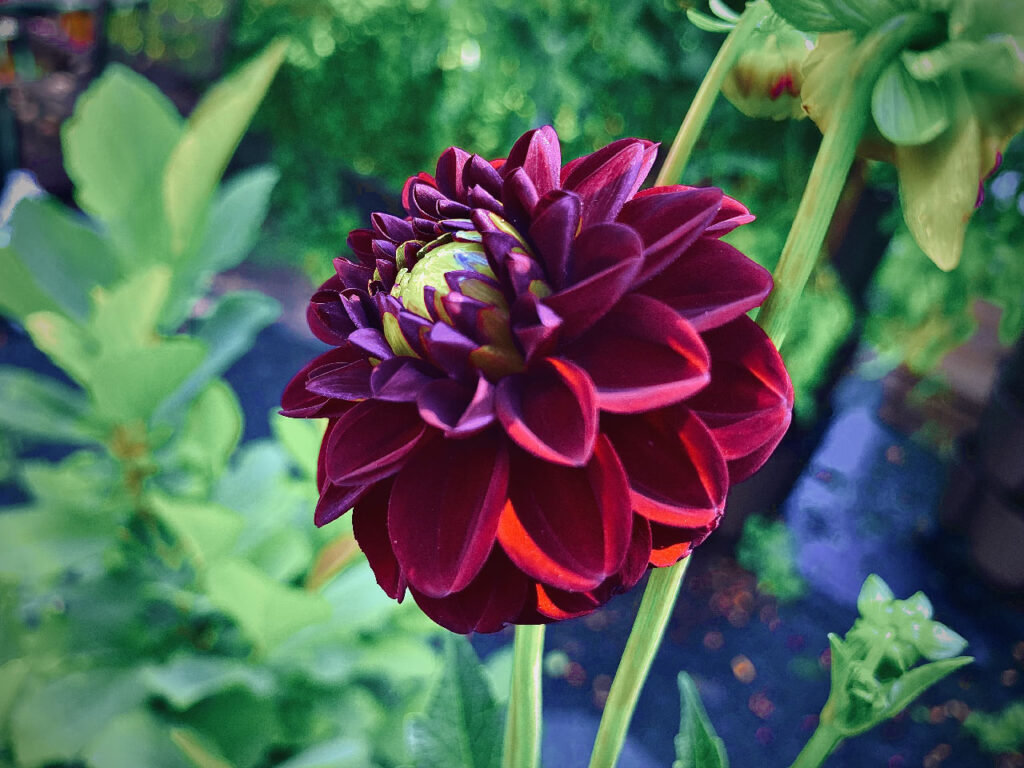
Hey, Dahlia! 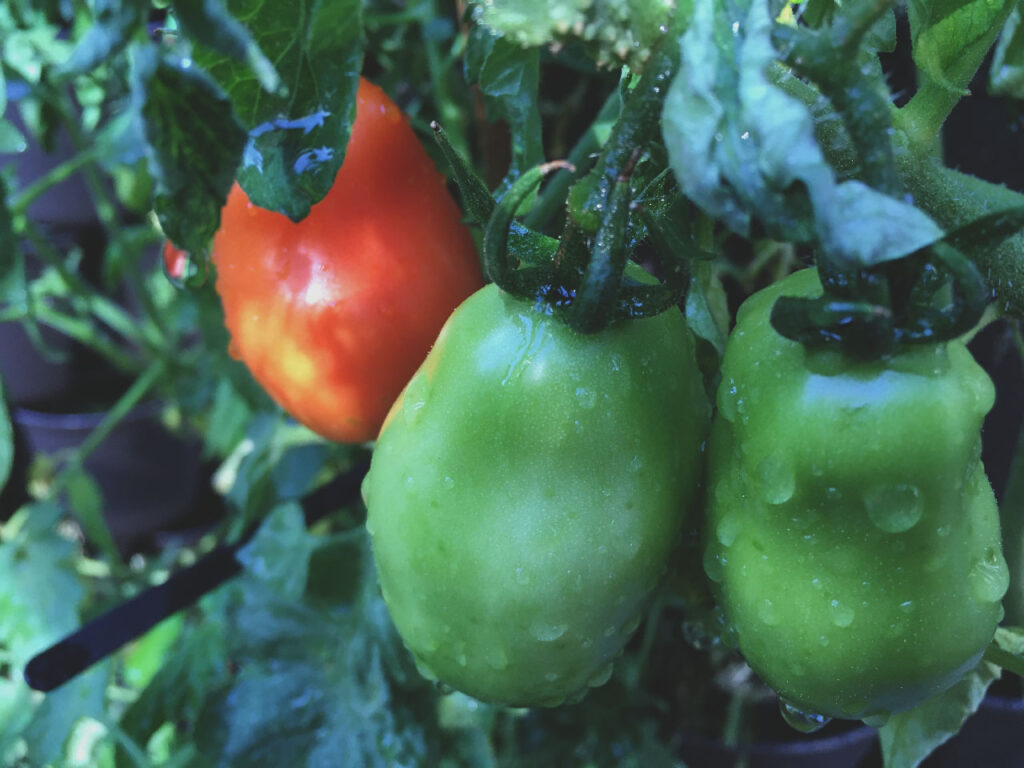
Romas slooooowly turning red. 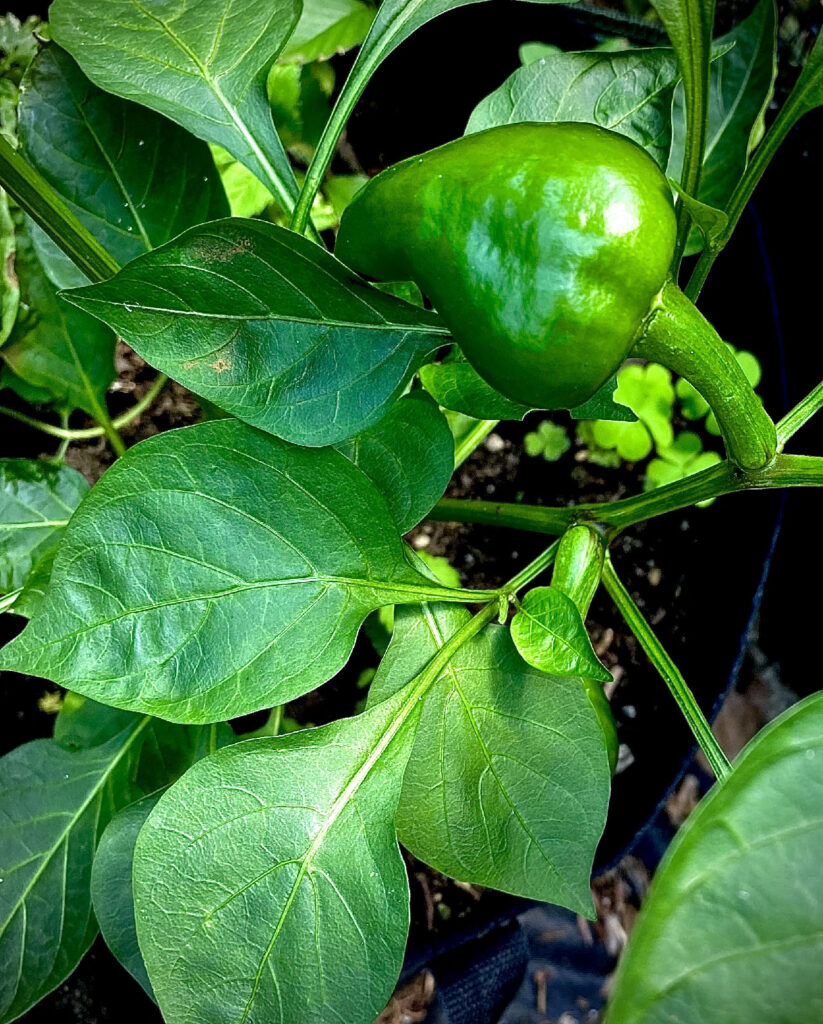
I am waiting waiting waiting for these to turn red. 
This year’s blackberries are perfection. I made a sauce with them for the first time ever.
I’ve been (more than) irritated at the lack of sunlight in the growing space. There’s no such thing as “full sun” anywhere on the property – because of the structures that were allowed to develop around it. Absolutely everything is taking so long to mature. To top it off, I received at least one seed pack that was the wrong variety and two transplants that are the wrong variety. Needless to say I won’t be ordering any tomato transplants next year. And I have to re-evaluate even these “organic” seed sources. What a waste. I’m not into mystery tomatoes. But I digress…
…The number one complaint people have is that they don’t have enough space. I feel that way at times, too. The truth is we can all work with what we have, whatever place we’re in. It just takes some thought.
One way to sustain growing is vertically. It’s gaining popularity but I still don’t think enough people have given it enough thought. After all, it’s not as nostalgic or as homestead-ish as those comforting rows of annuals we tend to envision.
Fortunately there are more options than before, with simple assembly. The next thing to consider is how vertical growing can be sustained over time.
Many people (and corporations) think of hydroponics, of complex feeding systems, of controlled environments, etc. as the way. But what if these inputs are suddenly unavailable? I don’t think we should be completely closed-minded in terms of technology but I don’t think developing a dependence on it is any smarter than making just one state the 6th largest agricultural economy on the planet (hmmm…yep. That’s California. Or at least it was.)

